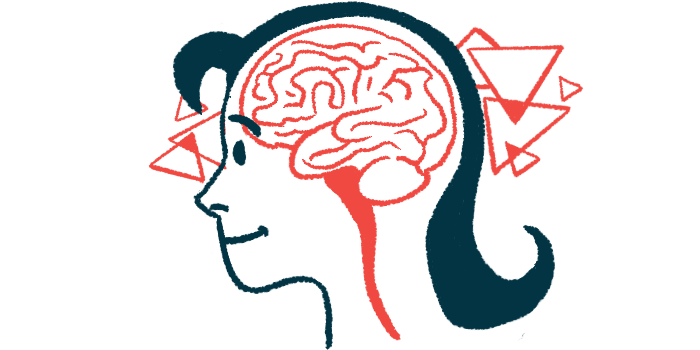Dual-targeted adaptive DBS surgery may work better in Parkinson’s
New protocol led to enhanced motor symptom control for 6 patients in study

A new dual-target, adaptive deep brain stimulation (DBS) protocol may offer more clinical benefits for patients than does traditional DBS for Parkinson’s disease, according to newly published data from a small clinical trial.
DBS surgery — in which a small device is implanted in the brain to deliver electrical stimulation — typically targets one brain region. Simultaneously targeting two brain regions implicated in Parkinson’s, rather than just one, led to enhanced motor symptom control in the six patients in the study.
Further, implementing an adaptive approach that automatically adjusts the DBS stimulation to meet the patient’s changing needs for motor control helped to maintain the treatment’s effectiveness — and overall, required less electrical stimulation than do standard continuous delivery approaches.
“We’re not only seeing excellent clinical responses to dual target stimulation, but we’re also able to integrate this adaptive, smart tool into the brain that can at least match this clinical response,” Kyle Mitchell, MD, assistant professor of neurology at Duke and a study author said in a university press release.
“It’s very exciting,” Mitchell added.
The study, “At home adaptive dual target deep brain stimulation in Parkinson disease with proportional control,” was published in Brain.
Need for DPS changes over course of day for Parkinson’s patients
With DBS, a small device delivers electrical impulses to the brain via electrodes implanted in target brain regions — much like a pacemaker works for heart conditions. In the brain, the use of DBS is believed to interrupt abnormal signaling patterns that contribute to the motor symptoms that are the hallmark of Parkinson’s.
The strategy is often used for patients for whom medications alone are no longer sufficient. DBS also can help control the involuntary movements, called dyskinesia, that can arise with long-term medication use.
For many Parkinson’s patients, the treatment can help to ease motor symptoms like tremors or rigidity.
Normally, the DBS electrodes are placed into either the subthalamic nucleus or the globus pallidus — two brain regions important for voluntary movement.
“There are benefits to both locations on their own depending on the patient’s symptoms,” said Dennis Turner, MD, a professor of neurosurgery, neurobiology, orthopedic surgery, and biomedical engineering at Duke, and the study’s senior author.
However, Turner and colleagues believed that targeting both regions at once might be a more effective approach. To test that, they launched a small clinical trial involving six Parkinson’s patients, ages 55-65.
Over a two-year period, the team compared the effects of single- or dual-stimulation protocols. The results showed that dual targeting led to greater reductions in motor symptoms than targeting either brain region alone.
In parallel, the team also conducted experiments to determine the optimal parameters for an adaptive DBS system.
Normally, a person’s doctor will set the key electrical parameters to be used for DBS, such as the duration and frequency of the electrical pulses that are continuously delivered through the DBS device. Those parameters might go unchanged for anywhere from days to years.
However, “the amount of stimulation a person living with Parkinson’s needs changes, depending on their medications or activity levels,” noted Warren Grill, PhD, a professor of biomedical engineering at Duke and a study author.
“A patient will need more stimulation if they are walking their daughter down the aisle at her wedding than if they are just watching TV,” Grill said.
Patients ‘doing better’ on new protocol than old one
To account for the differing levels Parkinson’s patients may need over the course of a day, the scientists collaborated with the medical device company Medtronic.
The goal was to create an adaptive DBS protocol, in which the stimulation device is programmed to sense changes in certain types of brain activity and use that information to automatically adjust stimulation patterns throughout the day.
“An adaptive system is like a smart thermostat in your office that makes adjustments based on the temperature outside,” Grill said.
Specifically, the protocol relies on reading a type of brain waves called beta oscillations, which previously were linked to Parkinson’s motor symptoms.
“We were able to test different levels of stimulation to determine the optimal levels of beta oscillations that would improve symptoms under different circumstances,” said Stephen Schmidt, PhD, a researcher at Duke.
The results indicated that the adaptive DBS protocol overall applied less electrical stimulation to the brain compared with continuous DBS — but preserved the effectiveness of the dual-targeting approach for motor symptom control in the clinic and at home.
“Simultaneous DBS of both regions may synergistically increase the therapeutic benefit,” the researchers wrote.
This tool has great potential down the road for making DBS a more tailored and elegant therapy.
According to Mitchell, the two-target approach is helping patients.
“Clinically, the patients are doing phenomenally. Looking at their rating scales, they are doing better than the average DBS patient when both target areas are stimulated,” Mitchell said.
The team now plans to further optimize their adaptive DBS protocol to advance the technology in clinical trials, according to Grill and colleagues.
“This tool has great potential down the road for making DBS a more tailored and elegant therapy,” Grill said.
The work was supported by funding from the National Institute of Neurological Disorders and Stroke.








